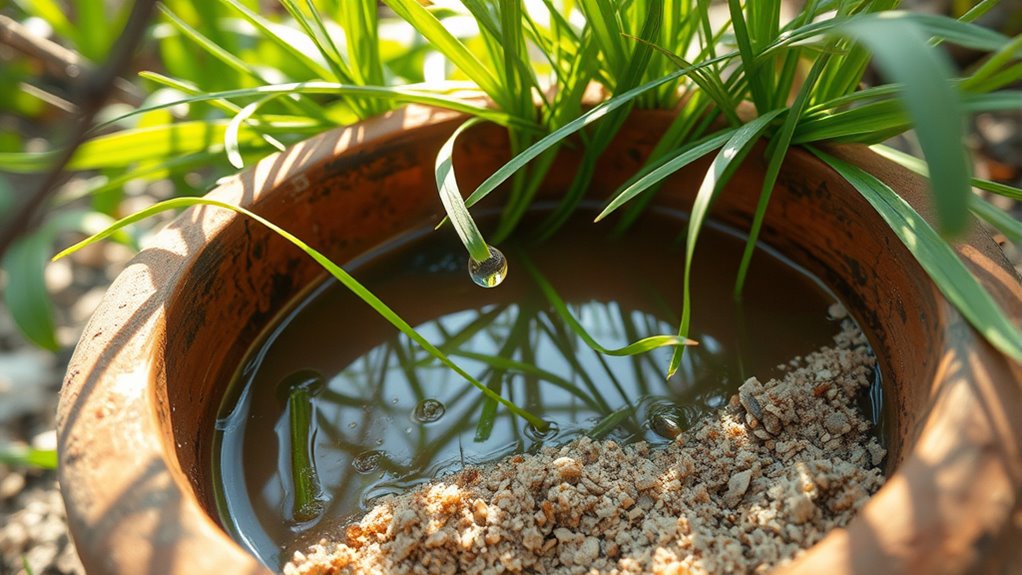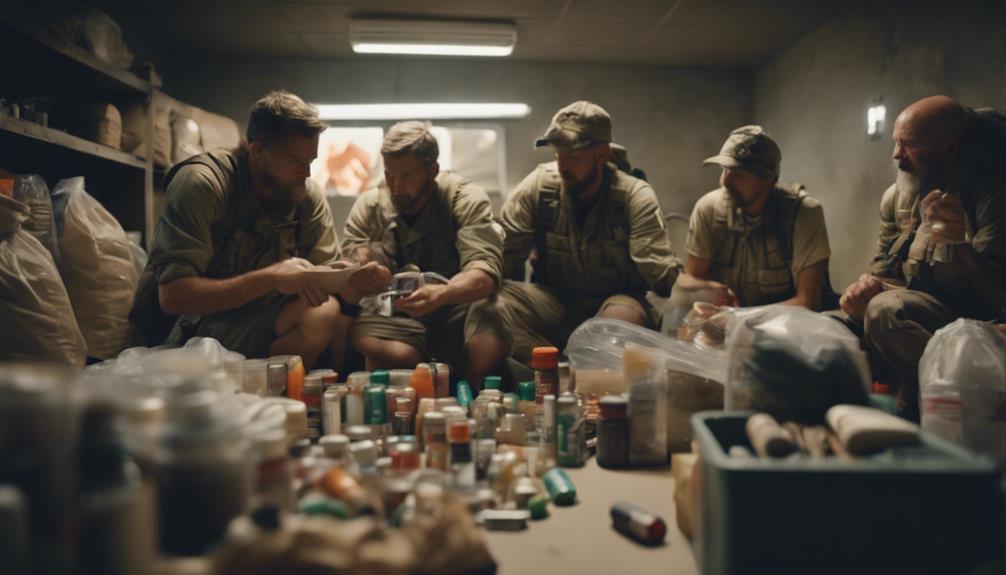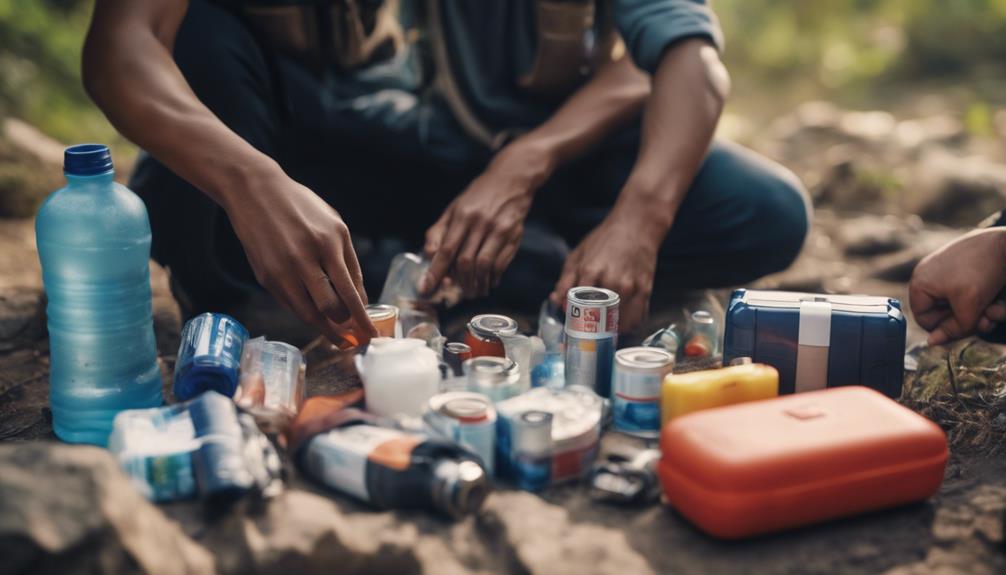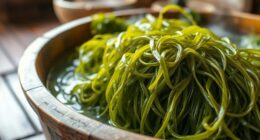Primitive water filters use natural materials like sand, gravel, charcoal, and grass to turn muddy water into safer drinking water. You pour water through layers of these materials to trap dirt, debris, and some bacteria. Boiling or sunlight can further disinfect it. Though simple, these techniques show resourcefulness in making water safer. To discover more about how early humans mastered this skill, keep exploring the fascinating methods behind primitive water purification.
Key Takeaways
- Primitive filters use layers of sand, gravel, charcoal, and grass to remove dirt and some pathogens from water.
- Materials like hollow logs or containers are assembled with natural layers for basic filtration.
- Boiling and sunlight exposure are added steps to further disinfect water after filtering.
- These methods significantly reduce turbidity and bacteria but may not eliminate all pathogens.
- Such resourceful techniques demonstrate early human ingenuity in transforming muddy water into safe drinking water.
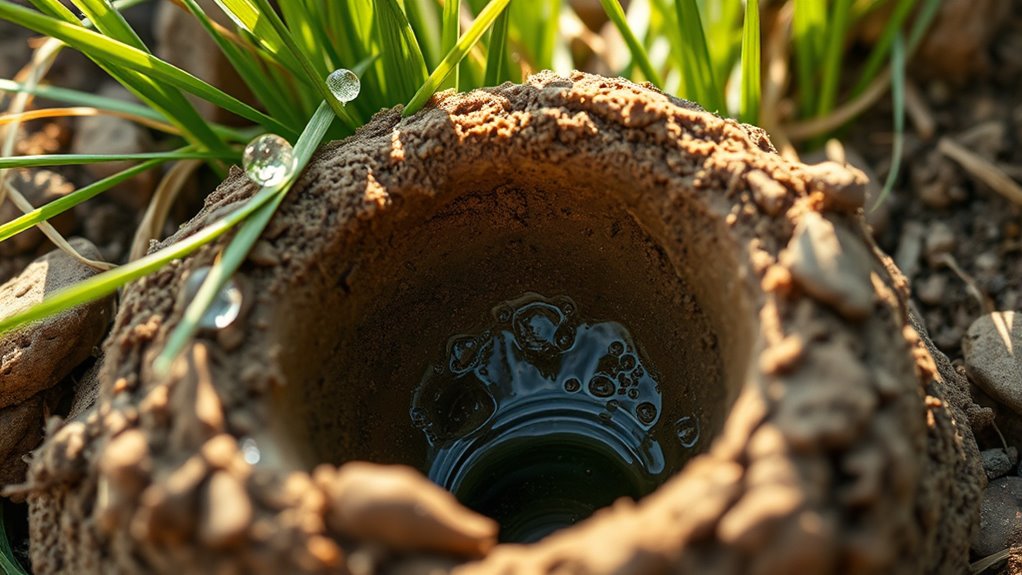
Have you ever wondered how ancient peoples kept their water safe to drink? They didn’t have modern filtration systems or chemical purifiers, but they relied on natural filtration and improvised purification techniques. These methods were simple yet effective, allowing them to turn murky, contaminated water into something safer for consumption. Understanding these primitive techniques can give you an appreciation for human ingenuity and may even inspire simple survival skills.
One of the most common approaches involved natural filtration. You might find yourself using layers of sand, gravel, charcoal, or even grass to filter water. The process is straightforward: you pour water through these materials in sequence, each layer capturing different types of impurities. For example, coarse gravel traps large particles like dirt and debris, while finer sand and charcoal remove smaller contaminants and some chemicals. Grass or leaves can serve as an initial barrier to catch floating debris and larger sediments. By creating this layered filter, you substantially reduce turbidity and some bacteria, making the water clearer and more palatable. This improvised purification isn’t foolproof against all pathogens, but it’s a crucial first step in making water safer for drinking.
Layered natural filtration with sand, gravel, and charcoal reduces impurities and improves water safety.
Ancient people often built these filters using whatever materials they had on hand. A hollowed-out log or a sturdy container served as the base, with layers of natural materials stacked inside. You might use a cloth or a piece of bark at the top to strain out larger particles before the water hits your improvised filter. Sometimes, they’d even add natural disinfectants like boiling water over fire or exposing it to sunlight, which helps eliminate some bacteria and viruses. These methods, combined with natural filtration, created a rudimentary purification system that could substantially decrease waterborne risks. Additionally, understanding the importance of water quality and how to improve it was vital for survival in ancient times.
While primitive filtration and improvised purification aren’t perfect, they’re remarkably effective given the resources available. They allow you to extend the usability of water sources, especially in survival situations or when modern filtration isn’t accessible. The key is understanding the sequence — starting with rough filtering to remove debris, then refining the water through finer materials, and finally, using additional methods like boiling or solar exposure for disinfection. These techniques highlight how early humans used their environment creatively, turning muddy or contaminated water into a life-saving resource. With a little effort and resourcefulness, you can mimic these ancient practices, turning what seems unusable into a safe sip of water.
Frequently Asked Questions
How Long Do Primitive Water Filters Typically Last?
The filter lifespan varies depending on usage and materials, but generally, primitive water filters last from a few days to a couple of weeks. To extend their life, you should regularly clean and maintain them by removing debris and replacing parts when needed. Keep in mind that proper maintenance tips, like avoiding overuse and storing them properly, help guarantee you get the most out of your primitive filter and stay safe while drinking.
Can These Filters Remove Harmful Chemicals or Viruses?
You might wonder if primitive water filters can remove harmful chemicals or viruses. Generally, they aren’t designed for chemical removal or virus filtration, so relying solely on them isn’t safe. These filters mainly reduce sediments and some bacteria, but chemicals and viruses often require more advanced treatment. If you need safe drinking water, consider additional purification methods like boiling, chemical disinfectants, or specialized filters that target these contaminants directly.
What Are the Best Natural Materials for Effective Filtration?
You should look for natural materials like natural fibers and mineral sands for effective filtration. Natural fibers, such as coconut husk or cotton, trap debris and some pathogens, while mineral sands like quartz or volcanic ash help remove sediments and improve water clarity. Combining these materials creates a layered filter that enhances purification, making your water safer to drink. This approach offers an eco-friendly, accessible solution for clean water.
How Do Temperature and Weather Affect Primitive Filtration?
Think of water as a delicate dance partner, affected by the weather’s mood swings. Temperature impact can speed up or slow down filtration, making water clearer or murkier. Weather influence, like rain or sun, changes the consistency of your filtrate, sometimes overwhelming your primitive system. Warm days may enhance flow, while cold snaps hinder it. You must adapt, understanding how temperature and weather shape your filtration journey.
Are Primitive Filters Suitable for Daily Drinking Needs?
You might wonder if primitive filters suit daily drinking needs. They can help with basic filtration but often lack effective chemical removal and virus filtration, making them less reliable for everyday use. If you rely on natural sources, you should consider additional purification steps. While primitive filters are useful in emergencies or survival situations, for regular consumption, more advanced systems are safer to guarantee clean, safe drinking water.
Conclusion
You now hold the secret to transforming dirt and grass into essential water, a skill that can save lives in the wild. These primitive filters prove that even the simplest tools can turn chaos into clarity, making water safe enough to drink. With just mud, grass, and your hands, you can create a life-saving miracle that feels like wielding a magic wand. Trust yourself—you have the power to turn nature’s chaos into pure, life-giving clarity.

